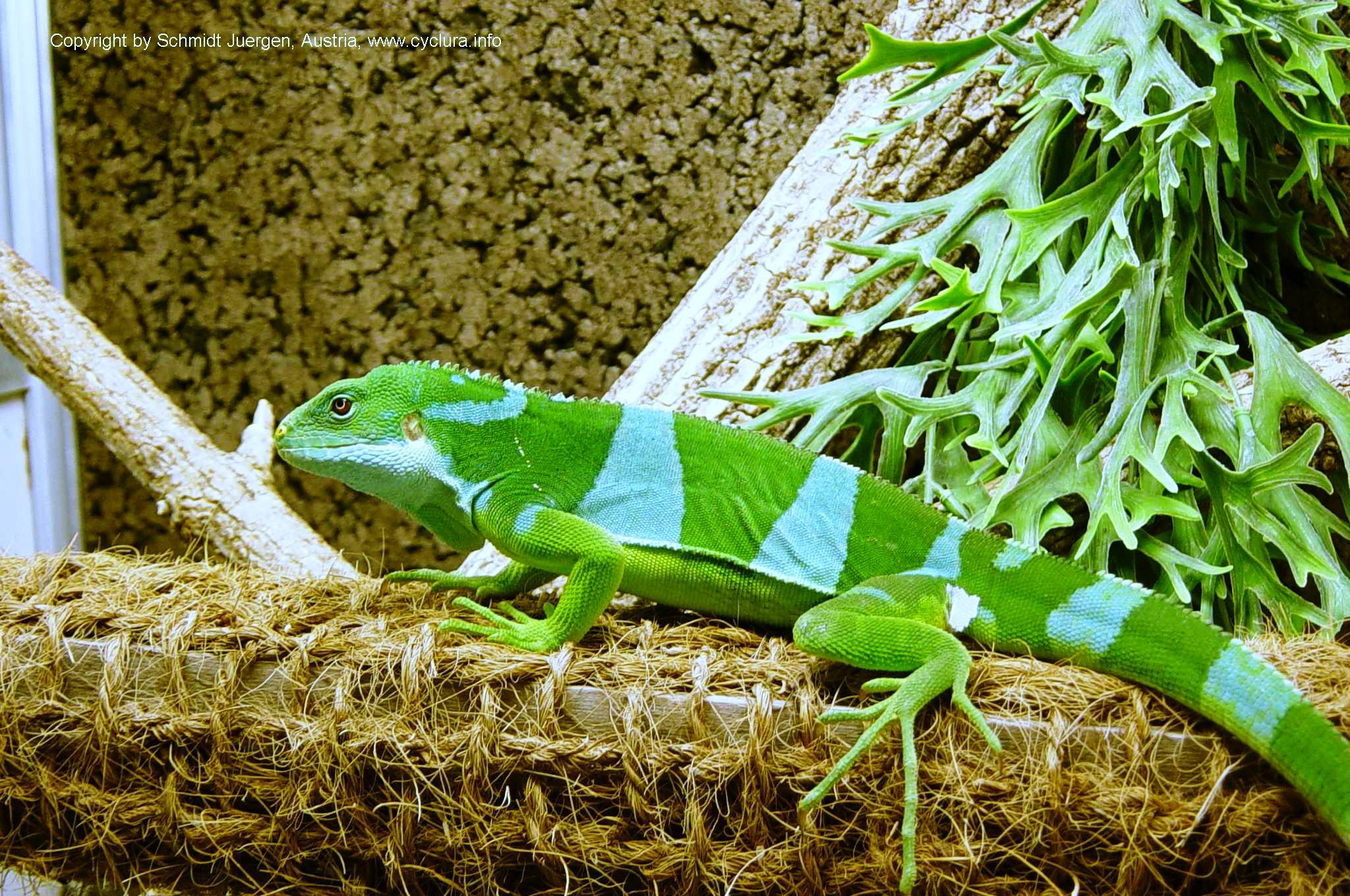

Distribution:
The
Description: Brachylophus
fasciatus can reach a total size of 80 cm, ¾ of which is the tail. Usually the
females are smaller than the males. Females are normally uniform green with a
light green to yellow belly, while males have 2-4 white to light blue bands on
a green body colour. It is very rare that females have also a few white to
light blue patterns. Characteristically of both sexes are red-brown eyes and
yellow rimmed nostrils.
Vivarium: This iguana specie can be
furnished in a similar fashion to enclosures for Green iguanas and are not
harder to keep as this specie.
Temperature
at day: 28-32°C, at night 18-23°C
Humidity:
60-80% day, 75-95% night.
Food:
Breeding: Sexual maturity can be reached
at an age of around 16 month. A clutch consists between 1-7 eggs , depends on
size of the female and are deposited in the humid sand. Vermiculit is used as
incubation substrate (1:1 ration). The incubation time can various enormously,
from 120 – 170 days at 29-30°C. The hatchlings are housed under the same conditions
as the adult iguanas.
Bibliography: Haltung und Vermehrung des Gebänderten Fidschi-Leguans (Brachylophus fasciatus) von J. Schmidt ; REPTILIA Nr. 44 (Dezember 2003/Januar 2004)